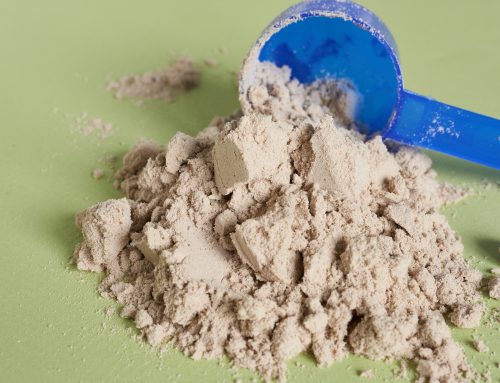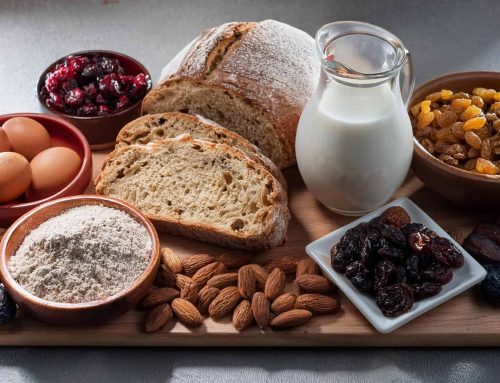Are there good fats and bad fats? If your grocery cart is full of “reduced fat” and “fat free” items, we have some news for you — not all fat is bad for you. In fact, some fats are essential for a healthy diet. That’s why we asked a dietitian for six healthy sources of fat worth adding to your diet. So how do you tell the difference between good fats and bad fats?
Good Fats and Bad Fats: Here are Six Good Fats
1. Fish.
When it comes to healthy fats, fish is one of the best options out there.
“That’s because fish tend to have unsaturated fats, or “healthy” fats, which are great for heart health,” says Samantha Oldman, MS, a bariatric surgery dietitian with Hartford HealthCare’s Digestive Health Institute.
“Animal proteins, on the other hand, tend to be higher in saturated fats, which can lead to increased cholesterol and risk of heart disease. ”Not sure which fish to choose? Loaded with omega-3s, salmon and trout stand out above the rest.
“These are great options, because humans aren’t able to make omega-3s on their own. That means we have to get them through either diet or supplements,” says Oldman. “Not only are these great for heart health, they also reduce inflammation.”
2. Nuts.
In the right portion sizes, nuts make for a great snack full of healthy fats .“Aim for either a quarter cup by volume, or an ounce by weight,” says Oldman. “If you eat too many, the calorie count can really skyrocket. For example, just one cup of cashews has more than 700 calories.
”As it turns out, fats have the most calories by gram – meaning you have to watch portion sizes more carefully than you would with proteins or carbs. And if you aren’t sure which nuts to choose?“ Whichever nuts you like best!” says Oldman. “They’re essentially created equal, there are no significant health differences between nuts.”
3. Avocado.
Although it’s technically considered a fruit, avocado is about 80% fat. “And while these are unsaturated fats, avocado is another common culprit when it comes to portions,” says Oldman.
“One quarter of a medium avocado is considered a portion, but many people will eat the whole avocado in a sitting – and who can blame them!” And before you blame poor storage for eating the whole avocado, Oldman has this tip .“Cut it in half, and squeeze a little lemon or lime juice on the half with the pit in it. Then wrap tightly with plastic wrap, and put the avocado back in the fridge .
”If raw avocado isn’t for you, avocado oil might be worth a try. “Avocado oil has no strong flavor, it’s considered a neutral oil. It also has a very high smoke point, so you can cook with it at higher temperatures,” she says.
4. Cheese.
According to Oldman, cheese has its pros and cons. “Cheese is a great source of protein, which is important because it will help you feel full longer. But it’s also high in saturated fats, so you don’t want to eat too much of it,” says Oldman.
But it can be a great source of healthy fat if you choose a lower fat option, like Swiss cheese or part-skim mozzarella .“Other than those, all cheese is equally high in saturated fats. Cheese does contain some other important nutrients, such as calcium, phosphorus and zinc, but keep an eye on your portions,” says Oldman. She recommends sticking to a one or two ounce serving of cheese.
For a one-ounce portion, choose either a single deli slice, a quarter cup of shredded cheese or two “dice-sized” cubes.
5. Yogurt.
Considered a probiotic, yogurt can make for another healthy fat. “In the right portion size, yogurt does offer a lot of benefits. In particular, it’s a probiotic, meaning it has ‘good bacteria’ that keeps your colon balanced,” says Oldman. If you aren’t getting enough probiotics in your diet, you may have symptoms such as:
• Gas
• Bloating
• Irregular bowel movements
On top of that, just one cup of yogurt can provide nearly half of your daily calcium needs. “But a word of caution – some types of yogurt can be high in saturated fats. If yogurt is a staple in your diet, aim for a low-fat or non-fat option,” says Oldman. “And be sure to check the label and choose a yogurt with five grams or less of added sugar per serving.”
6. Olive oil.
Trying to cook a delicious meal without loading up on butter? Look no further. “High in unsaturated fats that promote heart health, olive oil is a great choice for cooking,” says Oldman. “Avocado oil is another option, with a higher smoke point and no strong flavor. ”Or if those aren’t for you, try other oils like:
• Grapeseed
• Sesame
• Vegetable
• Canola
“These are good for your heart, and much lower in saturated fats than butter, coconut oil, palm oil and lard,” Oldman notes.
If you’re just looking for an oil to drizzle on a finished dish or a salad, extra virgin olive oil might be an even better choice. “Extra virgin olive oil isn’t refined, it’s simply cold-pressed. That means it has a stronger flavor, and it retains more vitamins and antioxidants than regular olive oil,” she adds.
Click here to read more about good fats and bad fats.






